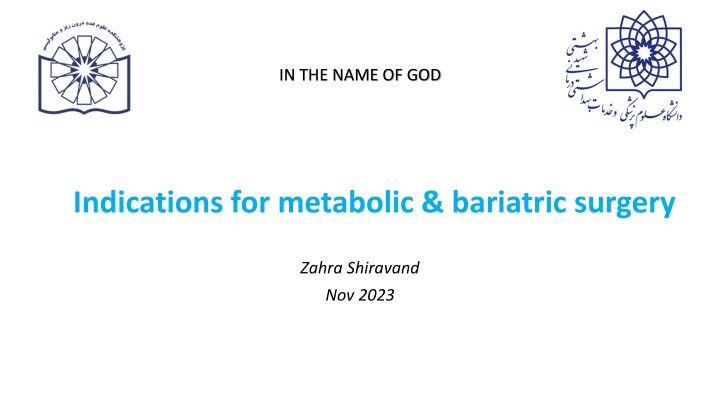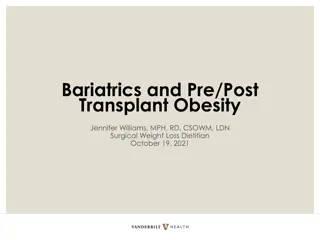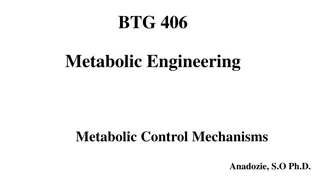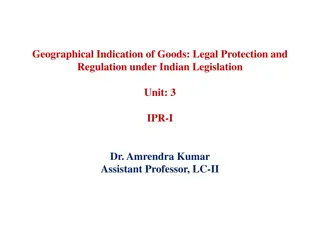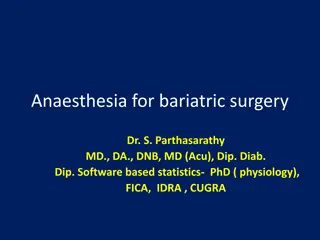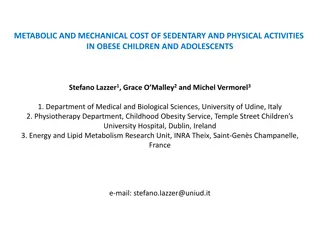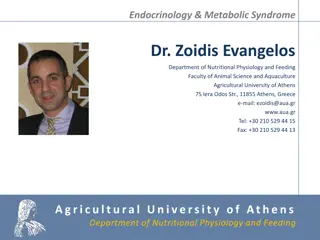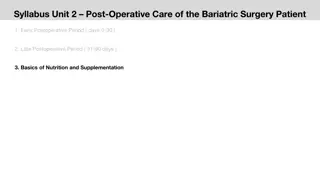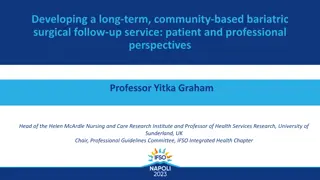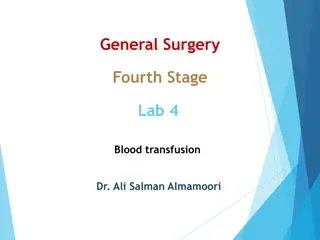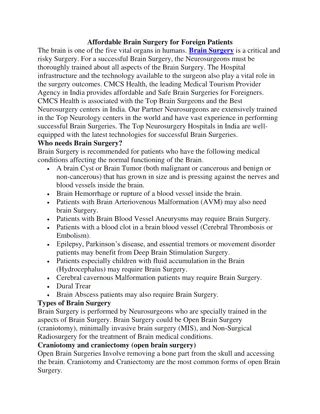Indications for Metabolic & Bariatric Surgery Overview
Obesity is linked to chronic inflammation and immune dysfunction, affecting metabolic disorders. Metabolic & Bariatric Surgery (MBS) offers significant weight loss and metabolic improvements with low mortality rates. Learn about surgical criteria, treatment options for type 2 diabetes, and the impact of MBS on BMI classes.
Download Presentation

Please find below an Image/Link to download the presentation.
The content on the website is provided AS IS for your information and personal use only. It may not be sold, licensed, or shared on other websites without obtaining consent from the author.If you encounter any issues during the download, it is possible that the publisher has removed the file from their server.
You are allowed to download the files provided on this website for personal or commercial use, subject to the condition that they are used lawfully. All files are the property of their respective owners.
The content on the website is provided AS IS for your information and personal use only. It may not be sold, licensed, or shared on other websites without obtaining consent from the author.
E N D
Presentation Transcript
IN THE NAME OF GOD Indications for metabolic & bariatric surgery Zahra Shiravand Nov 2023
AGENDA AGENDA Introduction Criteria for surgery Bridge to other treatment High risk patient Outcomes Revisional surgery Conclusion ADA2023 Iranian research
Introduction Obesity is associated with a chronic low-grade inflammatory state and immune dysfunction. It is suspected that disruption of homeostat mechanisms and consequently to metabolic disorders commonly associated with obesitymediated by incompletely elucidated pathways involving cytokine production, adipokines, hormones, and acute-phase reactant.
Introduction MBS produces superior weight loss outcomes compared with nonoperative treatments . After surgery, the significant improvement of metabolic disease, as well as the decrease in overall mortality. Perioperative mortality is very low, ranging between .03% and .2%, thus it is not surprising that MBS has become one of the most commonly performed operations in general surgery.
Introduction The 1991 NIH Consensus Statement described the vertical banded gastroplasty (VBG) and Roux-en-Y gastric bypass (RYGB) as the dominant procedures in clinical practice at the time(90%).
Metabolic Surgery in the Treatment Algorithm for Type 2 Diabetes2016
what what are the surgical Criteria? are the surgical Criteria?
BMI BMI MBS is currently the most effective evidence-based treatment for obesity across all BMI classes. Class I obesity (BMI 30 34.9 kg/m2) is a well-defined disease that causes or exacerbates multiple medical and psychological comorbidities, decreases longevity, and impairs quality of life.
BMI BMI MBS should be considered a treatment option for patients with class I obesity who do not achieve substantial or durable weight loss or co- morbidity improvement with nonsurgical methods, and early findings prompted international diabetes organizations to publish a joint statement supporting the consideration of MBS for patients with BMI< 35 kg/m2 and type 2 diabetes. Medical weight loss is considered to have greater durability in individuals with BMI<35 kg/m2 than individual with BMI>35 kg/m2.
BMI BMI However, if attempts at treating obesity and obesity-related co-morbidities such as: T2D,hypertension,dyslipidemia,cardio vasculardisease,asthma, NAFLD,PCOS,infertility,GERD,pseudotumor cerebri, and bone and joint diseases, have not been effective, MBS should be considered for suitable individuals with class I obesity.
BMI BMI Given the presence of high-quality scientific data on safety, efficacy, and cost-effectiveness of MBS in improving survival and quality of life in patients with BMI>35 kg/m2, MBS should be strongly recommended in these patients regardless of presence or absence of evident obesity- related comorbidities.
BMI thresholds in the Asian population BMI thresholds in the Asian population In the Asian population the prevalence of diabetes and cardiovascular disease is higher at a lower BMI than in the non-Asian population. Thus, BMI risk zones should be adjusted to define obesity at a BMI threshold of 25 27.5 kg/m2 in this population.
Older population Older population MBS is associated with slightly higher rates of postoperative complications compared with a younger population. The presence of obesity comorbid disease and the choice of operation are more predictive of 30-day adverse outcomes than age alone.
Older population Older population Frailty, rather than age alone, is independently associated with higher rates of postoperative complications following MBS. There is no evidence to support an age limit on patients seeking MBS, but careful selection that includes assessment of frailty is recommended.
Pediatrics and adolescents Pediatrics and adolescents MBS is safe in the population younger than 18 years and produces durable weight loss and improvement in comorbid conditions. Adolescents with severe obesity undergoing RYGB have significantly greater weight loss and improvement of cardiovascular co-morbidities compared with adolescents undergoing medical management. The benefits of RYGB on T2D and hypertension are greater in adolescents than adults
Pediatrics and adolescents Pediatrics and adolescents ASMBS recommend consideration of MBS in children/adolescents with BMI.120% of the 95th percentile (class II obesity) and major co-morbidity, or a BMI .140% of the 95thpercentile (class III obesity).
Pediatrics and adolescents Pediatrics and adolescents In addition, MBS does not negatively impact, pubertal development or linear growth, and therefore a specific Tanner stage and bone age, should not be considered a requirement for surgery. Increasingly, syndromic obesity, developmental delay, autism spectrum, or history of trauma is not considered a contraindication to MBS in adolescents.
Bridge to other treatment Bridge to other treatment
Joint Joint arthroplasty arthroplasty patients with obesity undergoing joint arthroplasty are at increased risk of hospital readmission and surgical complications, such as wound infection and deep vein thrombosis. MBS may be effective as a bridge to total joint arthroplasty in individuals with class II/III obesity when performed 2 years prior to joint surgery. Long-term joint-related complications rates were not significantly different.
Abdominal wall hernia repair Abdominal wall hernia repair Obesity increases the risk for impaired wound healing, local and systemic infections, and other complications following hernia repair, and increases the risk for recurrence. The timing of MBS relative to hernia repair remains controversial, evidence suggests that patients with large, chronic abdominal wall hernia may benefit from significant weight loss initially as staged procedure to definitive hernia repair .
Organ transplantation Organ transplantation Class III obesity is associated with end-stage organ disease and may limit the access to transplantation it is a relative contraindication for solid organ transplantation. MBS has been described in patients with end-stage organ disease as a way to improve their candidacy for transplantation.
Organ transplantation Organ transplantation Studies suggest that more than 50% of patients with end- stage renal disease (ESRD) and morbid obesity are able to be listed for kidney transplant within 5 years after MBS. MBS was associated with a 3-fold higher probability of heart transplantation in follow-up, compared with patients who did not have MBS.
Organ transplantation Organ transplantation MBS is shown to be safe and effective as a bridge to liver transplantation in selected patients who would otherwise be ineligible. limited data suggest that patients with obesity and end-stage lung disease may lose sufficient weight after MBS to achieve listing for transplantation.
MBS in the high MBS in the high- -risk patient risk patient
Cirrhosis Cirrhosis obesity conveys a 3-fold increase in the risk of liver decompensation in patients with known cirrhosis. MBS has been association with histologic improvement of NASH and regression of fibrosis in early cases, leading to a reduced risk of hepatocellular carcinoma. MBS is associated with an 88% risk reduction of progression of NASH to cirrhosis.
Heart failure Heart failure MBS in individuals with heart failure was associated with a significant improvement of left ventricular ejection fraction (LVEF), improvement of functional capacity, and higher chances for receiving heart transplantation.
60 kg/ kg/m m2 2 BMI> BMI>60 In general, mortality risk increases with increasing BMI, and BMI>50 kg/m2has been implicated in increasing surgical risk In older studies. These patients have greater obesity associated disease burden and more challenging surgical anatomy, resulting in longer operative times, higher rates of perioperative morbidity, and longer hospital lengths of Stay.
60 kg/m kg/m2 2 BMI> BMI>60 In some studies Others, however, failed to demonstrate a significant difference in perioperative complications, length of stay, 30-day mortality, or long-term outcomes after MBS when individuals with BMI>60 kg/ m2were compared with those with BMI<60 kg/m2.
Patient evaluation Patient evaluation NIH Consensus Statement recommends that patients who are candidates for MBS should be evaluated by a multidisciplinary team with access to medical, surgical, psychiatric, and nutritional expertise . Mental health conditions such as depression and binge eating disorders, as well as substance abuse, are found at higher rates among candidates for MBS than in the general population.
Outcomes Outcomes
Weight loss and co Weight loss and co- -morbidity improvement morbidity improvement weight loss outcomes for MBS that are durable for years after surgery are consistently reported at greater than 60% percent excess weight loss. Durability of weight loss at 5, 10, and 20 years after surgery has been consistently demonstrated in multiple studies.
Weight Weight loss and co loss and co- -morbidity improvement morbidity improvement There is substantial evidence demonstrating the significant and durable clinical improvement of metabolic syndrome following surgery. In a large cohort study of >180,000 Medicare beneficiaries, patients who underwent MBS had significantly lower risk of new-onset heart failure, myocardial infarction, and stroke, compared with matched controls at 4 years after surgery.
Greater weight loss and improvement in T2D, hypertension, and dyslipidemia has been demonstrated beyond 10 years after MBS Sustained weight loss of at least 15% is recognized as having a significant effect on inducing marked improvement of metabolic derangement in most patients.
Cancer risk Cancer risk Obesity is associated with an elevated risk of multiple Cancers: esophagus, breast, colorectal, endometrial, gallbladder, stomach, kidney, ovary, pancreas, liver, thyroid, multiple myeloma, and meningioma. MBS can lead to a significant reduction in incidence of obesity- associated cancer and cancer-related mortality.
Cancer risk Cancer risk MBS reduces the risk of developing cancer in the population with class II/III obesity, ranging from 11% to 50% for all cancer types. Recent retrospective cohort study of>30,000 patients with a median follow-up of 6 years found that adults with obesity who underwent MBS had a 32% lower risk of developing cancer and 48% lower risk of cancer-related death compared with a matched cohort who did not have surgery.
Mortality Mortality The Swedish Obese Subjects study demonstrated an adjusted decreased overall mortality by 30.7% in the group of 2010 surgical patients compared with nonsurgical controls, at an average of 10 years after surgery. Similar results were demonstrated in a large retrospective study comparing 9949 individuals who had undergone RYGB compared with nonsurgical controls With a mean follow-up of 7 years, adjusted overall mortality decreased by 40% in the MBS group.
Thus, the durable benefits of MBS for individuals with class II/III obesity are reflected in an overall lower mortality years after surgery in multiple populations.
Revisional surgery Revisional surgery Indications for revisional MBS vary among individual patients, but may include weight regain, insufficient weight loss, insufficient improvement of co-morbidities, and managing complications (e.g., gastroesophageal reflux). Revisional MBS is effective in achieving additional weight loss and co-morbidity reduction after the primary operation in selected patients, with acceptable complication rates, and low mortality rates.
Conclusion Conclusion MBS is recommended for individuals with BMI>35 kg/m2, regardless of presence, absence, or severity of comorbidities. MBS is recommended in patients with T2D and BMI>30kg/m2. MBS should be considered in individuals with BMI of 30 34.9 kg/m2 who do not achieve substantial or durable weight loss or co-morbidity improvement using nonsurgical methods.
Conclusion Conclusion Obesity definitions using BMI thresholds do not apply similarly to all populations. Clinical obesity in the Asian population is recognized in individuals with BMI>25 kg/m2. There is no upper patient-age limit to MBS. Older individuals who could benefit from MBS should be considered for surgery after careful assessment of co-morbidities and frailty. Children and adolescents with BMI.120% of the 95thpercentile and a major co-morbidity, or a BMI.140% of the 95th percentile, should be considered for MBS after evaluation by a multidisciplinary team in a specialty center.
Conclusion Conclusion MBS is an effective treatment of clinically severe obesity in patients who need other specialty surgery, such as joint arthroplasty, abdominal wall hernia repair, or organ transplantation. Severe obesity is a chronic disease requiring long-term management after primary MBS. This may include revisional surgery or other adjuvant therapy to achieve desired treatment effect.
Metabolic Surgery and the Changing Landscape for Diabetes Care| May 13 2016 Metabolic Surgery in the Treatment Algorithm for Type Metabolic Surgery in the Treatment Algorithm for Type 2 2 Diabetes: Diabetes: A Joint Statement by International Diabetes Organizations A Joint Statement by International Diabetes Organizations
ADA ADA2023 2023 Metabolic surgery should be a recommended option to treat type 2 diabetes in screened surgical candidates with BMI>40 kg/m2 (BMI>37.5 kg/m2 in Asian American individuals). in adults with BMI 35.0 39.9 kg/m2 (32.5 37.4 kg/m2 in Asian American individuals) who do not achieve durable weight loss and improvement in comorbidities (including hyperglycemia) with nonsurgical methods. A
ADA ADA2023 2023 Metabolic surgery may be considered as an option to treat type 2 diabetes in adultswith BMI 30.0 34.9 kg/m2(27.5 32.4 kg/m2 in Asian American individuals) who do not achieve durable weight loss and improvement in comorbidities (including hyperglycemia) with nonsurgical methods. A Exceedingly few presurgical predictors of success have been identified, but younger age, shorter duration of diabetes (e.g., <8 years) (70), and lesser severity of diabetes (better glycemic control, nonuse of insulin) are associated with higher rates of diabetes remission
ADA ADA2023 2023 Studies have documented diabetes remission after 1-5 years in 30 63% of patients with RYGB. The Surgical Treatment and Medications Potentially Eradicate Diabetes Efficiently (STAMPEDE) trial, which randomized 150 participants with unmanaged diabetes to receive either metabolic surgery or medical treatment, found that 29% of those treated with RYGB and 23% treated with VSG achieved A1C of 6.0% or lower after 5 years
Iranian research Iranian research
Design: retrospective Sample size: 612(surgery) 593(control) Participants: - sever obesity & over 18 years(TLGS),control - sever obesity & over 18 years(TOTS),source for the surgery Endpoint: New-onset HTN and dyslipidemia showed significantly lower frequencies in the surgery group compared to the control group (4 (1.8%) vs. 70 (20.4%) and 33 (14.3%) vs. 93 (31.5%), respectively). Regarding a less favorable metabolic profile in the surgery group at the baseline, the relative risk reductions associated with bariatric surgery were 94, 93, and 55% for the development of T2DM, HTN, and dyslipidemia, respectively. Length of f/u: 3.6 years(surgery),3.2 years (control)
Design: case-control Sample size: 118 (case), 236(control) Participants: 11- 18 years (case) ,19-29 years(control) Endpoint: The mean loss of BMI (- 15.4 3.6 vs. -15.8 4.6 kg/m2) and 12-month percentage of excess weight loss (80.4 20.1 vs. 80.2 20.1%) were similar in the two groups. Both groups showed parallel reductions in the cardiovascular risk factors. The remission of hypertension, diabetes mellitus, and dyslipidemia was similar between the groups. The increase in the hemoglobin level and copper deficiency was greater in young adults, whereas the increase in ferritin deficiency was greater in adolescents. Length of f/u: 1-year after surgery
Design:prospective Sample size: 1958 Participants: A total of 1958 bariatric patients underwent laparoscopic sleeve gastrectomy and gastric bypass from March 2013 to March 2017. The patients were categorized according to preoperative eGFR (30-59, 60-89, 90-124, and 125 mL/min). Endpoint: Although patient with lower preoperative eGFR experience less weight loss after bariatric surgery, Preoperative kidney function does not appear to have an independent impact on postoperative weight loss in patient with eGFR >30 ml/min. Length of f/u: 1- year
